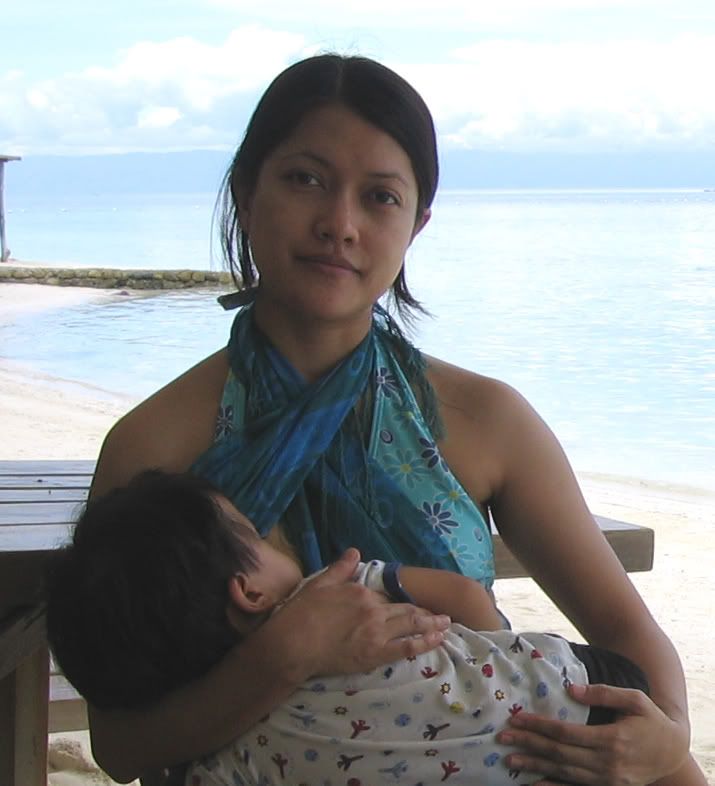
Last week, I met the Philippines’ first-ever “idol of breastfeeding”, Tessa Prieto-Valdez. Tessa is a fashion designer, columnist and socialite known for her flamboyant outfits. She also comes from the wealthy Prieto clan, who controls one of the largest newspapers in the Philippines, the Philippine Daily Inquirer. I was surprised that Tessa is quite diminutive, even smaller than me, that her first-born is 20 years old, and that she has quite a sense of humor. She said, “I never imagined that my small breasts would ever take center stage!”
It may seem strange that the Philippines would need to have a breastfeeding “idol”. But having breastfed two children and currently breastfeeding my 11-month-old baby, I can see the wisdom in it. Breastfeeding is no longer commonplace, and media only shows bottle-feeding as the normal way to feed a baby.
I owe some of my breastfeeding success to mothers who have modelled breastfeeding for me. I would like to dedicate this post to them, my very own breastfeeding idols:
Victoria, my sister. Vicky became a mother when she was only 20 years old and I was 15. Being the last-born child, I thought babies were alien beings, but through Vicky’s motherhood, I first fell in love with babies. Vicky produced copious amounts of breastmilk. She leaked through diapers, towels and anything else that she placed on her chest. I didn’t know it then, but this image was a powerful one for me. You see, Vicky and I are similarly endowed (that is to say, not well-endowed), and her nursing experience planted the idea in my subconscious that I, too, could produce a lot of milk.
Melen, former Executive Director of the Council for the Welfare of Children. Years before I even thought of marriage and motherhood, I attended meetings with Melen. In a few of them, Melen brought her baby and nursed her right then and there, in front of everybody, without apology, without a thought. Melen’s example showed me many things: that working women could breastfeed; that breastfeeding is something to be proud of; and, most importantly, that babies and their Moms should stay together as much as possible.
May and Mian, my UNICEF colleagues. When my fiancé and I were attending our pre-marital seminars at the City Hall, we saw a poster of a breastfeeding mother and child. It was May and her baby. May, who had four babies in four years, always gushed about having babies naturally and breastfeeding them. Mian also had natural childbirths and, in fact, was the one who introduced me to my ob-gyne when I was looking for someone who would let me give birth without drugs. Mian brought her babies to office outings, meetings and official trips even to Southern Philippines. May and Mian taught me that breastfeeding was one of the best things about motherhood, and that we could combine breastfeeding with our work in UNICEF. If there’s a will, there’s a way.
As a breastfeeding Mom, and one who works, I feel a responsibility to show off my breastfeeding. I nurse in public – at the mall, in Church, at work, on the street. I declare a little too loudly to the building security that the big black bag I am carrying is not a laptop but a “breast pump”. It’s important for other women to see breastfeeding as natural, enjoyable and doable even for a working Mom.
One of the best compliments I’ve ever received was when Yas, a woman I work with in the UNICEF-assisted media advocacy project, said about me, “she’s my breastfeeding model!”

